Foreword
Preface
About the Book Content by Topics and Chapters and The Pathway of Knowledge
Contents
About the Author
Time-Space and AI. Artificial Neural Networks
1 Evolving Processes in Time-Space. Deep Learning and Deep Knowledge Representation in Time-Space. Brain-Inspired AI
1.1 Evolving Processes in Time-Space
1.1.1 What Are Evolving Processes?
1.1.2 Evolving Processes in Living Organisms
1.1.3 Spatio-temporal and Spectro-temporal Evolving Processes
1.2 Characteristics of Evolving Processes: Frequency, Energy, Probability, Entropy and Information
1.3 Light and Sound
1.4 Evolving Processes in Time-Space and Direction
1.5 From Data and Information to Knowledge
1.6 Deep Learning and Deep Knowledge Representation in Time-Space. How Deep?
1.6.1 Defining Deep Knowledge in Time-Space
1.6.2 How Deep?
1.6.3 Examples of Deep Knowledge Representation in This Book
1.7 Statistical, Computational Modelling of Evolving Processes
1.7.1 Statistical Methods for Computational Modelling
1.7.2 Global, Local and Transductive (“Personalised”) Modelling [28]
1.7.3 Model Validation
1.8 Brain-Inspired AI
1.9 Chapter Summary and Further Readings for Deeper Knowledge
Acknowledgements
References
2 Artificial Neural Networks. Evolving Connectionist Systems
2.1 Classical Artificial Neural Networks: SOM, MLP, CNN, RNN
2.1.1 Unsupervised Learning in Neural Networks. Self-organising Maps (SOM)
2.1.2 Supervised Learning in ANN. Multilayer Perceptron and the Back Propagation Algorithm
2.1.3 Convolutional Neural Networks (CNN)
2.1.4 Recurrent and LSTM ANN
2.2 Hybrid and Knowledge-Based ANN
2.3 Evolving Connectionist Systems (ECOS)
2.3.1 Principles of ECOS
2.3.2 Evolving Self-organising Maps
2.3.3 Evolving MLP
2.4 Evolving Fuzzy Neural Networks. EFuNN
2.5 Dynamic Evolving Neuro-fuzzy Inference Systems—DENFIS
2.6 Other ECOS Methods and Systems
2.7 Chapter Summary and Further Readings for Deeper Knowledge
Acknowledgements
References
The Human Brain
3 Deep Learning and Deep Knowledge Representation in the Human Brain
3.1 Time-Space in the Brain
3.2 Learning and Memory
3.3 Neural Representation of Information
3.4 Perception in the Brain Is Always Spatio/Spectro-temporal
3.5 Deep Learning and Deep Knowledge Representation in Time-Space in the Brain
3.6 Information and Signal Processing in Neurons and in the Brain
3.6.1 Information Coding
3.6.2 Molecular Basis of Information Processing
3.7 Measuring Brain Activities as Spatio/Spectro-temporal Data
3.7.1 General Notions
3.7.2 Electroencephalogram (EEG) Data
3.7.3 MEG
3.7.4 CT and PET
3.7.5 fMRI
3.8 Chapter Summary and Further Readings for Deeper Knowledge
Acknowledgements
References
Spiking Neural Networks
4 Methods of Spiking Neural Networks
4.1 Information Representation as Spikes. Spike Encoding Algorithms
4.1.1 Rate Versus Spike Time Information Representation
4.1.2 Spike Encoding Algorithms
4.2 Spiking Neuron Models
4.2.1 Hodgkin-Huxley Model (HHM)
4.2.2 Leaky Integrate-and-Fire Model (LIFM)
4.2.3 Izhikevich Model (IM)
4.2.4 Spike Response Model (SRM)
4.2.5 Thorpe’s Model (TM)
4.2.6 Probabilistic and Stochastic Spiking Neuron Models
4.2.7 Probabilistic Neurogenetic Model of a Neuron
4.3 Methods for Learning in SNN
4.3.1 SpikeProp
4.3.2 Spike-Time Dependent Plasticity (STDP)
4.3.3 Spike-Driven Synaptic Plasticity (SDSP)
4.3.4 Rank Order (RO) Learning Rule
4.3.5 Learning in Dynamic Synapses
4.4 Spike Pattern Association Neurons and Neural Networks
4.4.1 Principles of Spike Pattern Association Learning. The SPAN Model
4.4.2 Case Study Examples
4.4.3 Memory Capacity of SPAN
4.4.4 SPAN for Classification Problems
4.5 Why Use SNN?
4.6 Summary and Further Readings for Deeper Knowledge
Acknowledgements
References
5 Evolving Spiking Neural Networks
5.1 Principles and Methods of Evolving SNN (ESNN)
5.2 Convolutional ESNN (CeSNN)
5.3 Dynamic Evolving SNN (DeSNN)
5.4 Fuzzy Rule Extraction from ESNN
5.4.1 Fuzzy Rule Extraction from ESNN
5.4.2 A Case Study of Fuzzy Rule Extraction from Water Tastant Sensory Data
5.5 Evolving SNN for Reservoir Computing
5.5.1 Reservoir Architectures. Liquid State Machines (LSM)
5.5.2 ESNN/DeSNN as Classification/Regression Systems for Reservoir Architectures
5.6 Chapter Summary and Further Readings for Deeper Knowledge
Acknowledgements
References
6 Brain-Inspired SNN for Deep Learning in Time-Space and Deep Knowledge Representation. NeuCube
6.1 Brain Inspired SNN (BI-SNN). The BI-SNN NeuCube as a Generic Spatio-temporal Data Machine
6.1.1 A General Architecture of a BI-SNN
6.1.2 The BI-SNN NeuCube as a Generic Spatio-temporal Data Machine
6.1.3 Mapping Input Temporal Variables into a 3D SNNcube Based on Graph Matching Optimisation Algorithm
6.2 Deep Learning in Time-Space and Deep Knowledge Representation in NeuCube
6.2.1 Deep Unsupervised Learning in Time-Space and Deep Knowledge Representation from Temporal or Spatio/Spectro Temporal Data (TSTD)
6.2.2 Deep Supervised Learning in Time-Space
6.2.3 Deep Learning in Time-Space for Predictive Modelling in NeuCube. The EPUSSS Algorithm
6.3 Modelling Time in NeuCube: The Past, the Present, the Future,… and Back to the Past
6.3.1 Event-Based Modelling. External Versus Internal Time. Past-, Present- and Future Time
6.3.2 Tracing Events Back in Time
6.4 A Design Methodology for Application Oriented Spatio-temporal Data Machines
6.4.1 Design Methodology for Implementing Application Oriented Spatio-temporal Data Machines as BI-AI Systems in NeuCube
6.4.2 Input Data Encoding
6.4.3 Spatial Mapping of Input Variables
6.4.4 Unsupervised Training of the SNNcube
6.4.5 Supervised Training and Classification/Regression of Dynamic Spiking Patterns of the SNNcube in a SNN Classifier
6.4.6 3D Visualisation of the SNNcube
6.4.7 Optimisation of NeuCube Structure and Parameters
6.4.8 Model Interpretation, Rule Extraction, Deep in Time-Space Knowledge Representation
6.5 Case Studies of the Design and Implementation of Classification and Regression Spatio-temporal Data Machines
6.5.1 A Case Study on the Design of a Classification Spatio-temporal Data Machine in NeuCube
6.5.2 A Case Study on the Design a Regression/Prediction Spatio-temporal Data Machine in NeuCube
6.6 Chapter Summary and Further Readings for Deeper Knowledge
Acknowledgements
References
7 Evolutionary- and Quantum-Inspired Computation. Applications for SNN Optimisation
7.1 Principles of Evolution and Methods of Evolutionary Computation
7.1.1 The Origin and the Evolution of Life
7.1.2 Methods of Evolutionary Computation (EC)
7.1.3 Genetic Algorithms
7.1.4 Evolutionary Strategies (ES)
7.1.5 Particle Swarm Optimisation
7.1.6 Estimation of Distribution Algorithms (EDA)
7.1.7 Artificial Life Systems
7.2 Quantum Inspired Evolutionary Computation: Methods and Algorithms
7.2.1 Principles of Quantum Information Processing
7.2.2 Principles of Quantum Inspired Evolutionary Algorithms (QEA)
7.2.3 Quantum Inspired Evolutionary Algorithm (QiEA)
7.2.4 Versatile QiEA (VQiEA)
7.2.5 Extension of the VQiEA to Deal with Continuous Value Variables
7.3 Quantum Inspired Evolutionary Computation for the Optimisation of SNN
7.3.1 A Quantum-Inspired Representation of a SNN
7.3.2 Application of QiEA for the Optimisation of ESNN Classifier on Ecological Data
7.3.3 Integrative Computational Neuro Genetic Model (CNGM) Utilising Quantum-Inspired Representation
7.4 Quantum Inspired Particle Swarm Optimisation
7.4.1 Quantum Inspired Particle Swarm Optimisation Algorithms
7.4.2 Quantum Inspired Particle Swarm Optimisation Algorithm (QiPSO) for the Optimisation of ESNN
7.4.3 Dynamic QiPSO
7.4.4 Application of DQiPSO for Feature Selection and Model Optimisation
7.5 Chapter Summary and Further Readings for Deeper Knowledge
Acknowledgements
References
Deep Learning and Deep Knowledge Representation of Brain Data
8 Deep Learning and Deep Knowledge Representation of EEG Data
8.1 Time-Space Brain Data. EEG Data
8.1.1 Spatio-temporal Brain Data
8.1.2 Brain Atlases
8.1.3 EEG Data
8.2 Deep Learning and Deep Knowledge Representation of EEG Data in BI-SNN
8.3 Deep Learning, Recognition and Modelling of Cognitive Tasks
8.3.1 System Design
8.3.2 Case Study Cognitive EEG Data
8.3.3 Experimental Results
8.3.4 Model Interpretation
8.4 Deep Learning, Recognition and Expression of Emotions in a BI-SNN
8.4.1 General Notions
8.4.2 Using a NeuCube Model for Emotion Recognition
8.4.3 A Case Study of EEG Data for Emotion Recognition from Facial Expression
8.4.4 Analysis of the Connectivity in a Trained SNNcube When a Person Is Perceiving Emotional Face and When a Person Is Expressing Such Emotions
8.4.5 Can We Teach a Machine to Express Emotions?
8.5 Deep Learning and Modelling of Peri-perceptual Processes in BI-SNN
8.5.1 The Psychology of Sub-conscious Brain Processes
8.5.2 Experimental Setting and EEG Data Collection
8.5.3 The Design of a NeuCube Model
8.6 Modelling Attentional Bias in BI-SNN
8.6.1 Attentional Bias
8.6.2 Experimental Settings
8.6.3 Results
8.7 Chapter Summary and Further Readings for Deeper Knowledge
Acknowledgements
Appendix
References
9 Brain Disease Diagnosis and Prognosis Based on EEG Data
9.1 SNN for Modelling EEG Data to Assess a Potential Progression from MCI to AD
9.1.1 Design of the Study and Data Collection
9.1.2 Design of a NeuCube Model
9.1.3 Classification Results
9.1.4 Analysis of Functional Changes in Brain Activity from MCI to AD
9.2 SNN for Predictive Modelling of Response to Treatment Using EEG Data
9.2.1 Conceptual Design
9.2.2 The Case Study Problem Specification and Data Collection
9.2.3 Modelling the EEG Data in a NeuCube Model
9.2.4 Comparative Analysis of Brain Activities of MMT Subjects Under Different Drug Doses Versus CO and OP Subjects. Modelling and Understanding the Information Exchange Between Brain Areas Measured Through EEG Channels
9.2.5 Analysis of Classification Results
9.3 Chapter Summary and Further Readings for Deeper Knowledge
Acknowledgements
References
10 Deep Learning and Deep Knowledge Representation of fMRI Data
10.1 Brain fMRI Data and Their Analysis
10.1.1 What Are fMRI Data?
10.1.2 Traditional Methods for fMRI Data Analysis
10.1.3 Selecting Features from FMRI Data
10.2 Deep Learning and Deep Knowledge Representation of fMRI Data in NeuCube
10.2.1 Why Use SNN for Modelling of fMRI Spatio-temporal Brain Data?
10.2.2 A Methodology for Deep Learning and Deep Knowledge Representation of fMRI Data in BI-SNN
10.3 Mapping, Learning and Classification of fMRI Data in NeuCube on the Case Study of STAR/PLUS Data
10.3.1 The STAR/PLUS Benchmark fMRI Data
10.3.2 fMRI Data Encoding, Mapping and Learning in a NeuCube SNN Model
10.3.3 Classification of the fMRI Data in a NeuCube-Based Model
10.4 Algorithms for Modelling fMRI Data that Measure Cognitive Processes
10.4.1 Algorithm for Encoding Dynamic STBD into Spike Sequences
10.4.2 Connectivity Initialization and Deep Learning in a SNN Cube
10.4.3 Deep Knowledge Representation in a Trained SNN Model
10.4.4 A Case Study Implementation on the STAR/PLUS Data
10.5 Chapter Summary and Further Readings for Deeper Knowledge
Acknowledgements
References
11 Integrating Time-Space and Orientation. A Case Study on fMRI + DTI Brain Data
11.1 Introduction and Background Work
11.2 A Personalised Modelling Architecture for fMRI and DTI Data Integration Based on the NeuCube BI-SNN
11.3 Orientation-Influence Driven STDP (oiSTDP) Learning in SNN for the Integration of Time-Space and Direction, Illustrated on fMRI and DTI Data
11.3.1 Architecture, Mapping and Initialization Scheme
11.3.2 Neuron Model
11.3.3 Unsupervised Weight Adaptation of Synapses
11.4 Experimental Results on Synthetic Data
11.4.1 Data Description
11.4.2 Experimental Results
11.5 Using oiSTDP Learning for the Classification of Responding and Non-responding Schizophrenic Patients to Clozapine Monotherapy
11.5.1 Problem Specification and Data Preparation
11.5.2 Modelling and Experimental Results
11.6 Chapter Summary and Further Readings for Deeper Knowledge
Acknowledgements
References
SNN for Audio-Visual Data and Brain-Computer Interfaces
12 Audio- and Visual Information Processing in the Brain and Its Modelling with Evolving SNN
12.1 Audio and Visual Information Processing in the Human Brain
12.1.1 Audio Information Processing
12.1.2 Visual Information Processing
12.1.3 Integrated Audio and Visual Information Processing
12.2 Modelling Audio-, Visual and Audio-Visual Information Processing with Convolutional Evolving Spiking Neural Networks (CeSNN)
12.2.1 Issues with Modelling Audio-Visual Information with SNN
12.2.2 Convolutional eSNN (CeSNN) for Modelling Visual Information
12.2.3 Convolutional eSNN (CeSNN) for Modelling Audio Information
12.2.4 Convolutional eSNN (CeSNN) for Integrated Audio-Visual Information Processing
12.3 Case Studies, Experiments and Results
12.3.1 Data Sets
12.3.2 Experimental Results
12.4 Chapter Summary and Further Readings for Deeper Knowledge
Acknowledgements
References
13 Deep Learning and Modelling of Audio-, Visual-, and Multimodal Audio-Visual Data in Brain-Inspired SNN
13.1 Deep Learning of Sound in Brain-Inspired SNN
13.1.1 Deep Learning of Audio Data in the Brain
13.1.2 A BI-SNN Using Tonotopic and Stereo Mapping and Learning of Sound
13.1.3 Deep Learning and Recognition of Music
13.1.4 Experimental Results
13.2 Deep Learning and Recognition of Visual Data in a Brain-Inspired SNN for Fast Moving Object Recognition and for Gender Recognition
13.2.1 Two Approaches to Visual Information Processing
13.2.2 Applications for Fast Moving Object Recognition
13.2.3 Applications for Gender and Age Group Classification Based on Face Recognition
13.3 Retinotopic Mapping and Learning of Dynamic Visual Information in a Brain-Like SNN Architecture on the Case Study of Moving Object Recognition
13.3.1 General Principles
13.3.2 The Brain-Inspired SNN and the Proposed Retinotopic Mapping
13.3.3 Unsupervised and Supervised Learning of Dynamic Visual Patterns
13.3.4 Design of an Experiment for the MNIST-DVS Benchmark Dataset
13.3.5 Experimental Results
13.3.6 Model Interpretation for a Better Understanding of the Processes Inside the Visual Cortex
13.3.7 Summary of the Proposed BI-SNN Retinotopic Mapping Method
13.4 Chapter Summary and Further Readings for Deeper Knowledge
Acknowledgements
References
14 Brain-Computer Interfaces Using Brain-Inspired SNN
14.1 Brain-Computer Interfaces
14.1.1 General Notions
14.1.2 BCI Based on EEG
14.1.3 Types and Applications of BCI
14.2 A Framework for Brain-Inspired BCI (BI-BCI)
14.2.1 The NeuCube BI-SNN Architecture
14.2.2 A Brain-Inspired Framework for BCI (BI-BCI) with Neurofeedback
14.3 BI-BCI for Detecting Motor Execution and Motor Intention from EEG Signals
14.3.1 Introduction
14.3.2 Design of an Experimental BI-BCI System
14.3.3 Classification Results
14.3.4 Analysis of the Results
14.4 BI-BCI for Neurorehabilitation with a Neurofeedback and for Neuro-prosthetics
14.4.1 General Notions
14.4.2 Applications
14.5 From BI-BCI to Knowledge Transfer Between Humans and Machines
14.6 Chapter Summary and Further Readings for Deeper Knowledge
Acknowledgements
References
SNN in Bio- and Neuroinformatics
15 Computational Modelling and Pattern Recognition in Bioinformatics
15.1 Bioinformatics Primer
15.1.1 General Notions
15.1.2 DNA, RNA and Proteins. The Central Dogma of Molecular Biology and the Evolution of Life.
15.1.3 Phylogenetics
15.1.4 The Challenges of Molecular Data Analysis
15.2 Biological Databases. Computational Modelling of Bioinformatics Data
15.2.1 Biological Databases
15.2.2 General Information About Bioinformatics Data Modelling
15.2.3 Gene Expression Data Modelling and Profiling
15.2.4 Clustering of Time Series Gene Expression Data
15.2.5 Protein Data Modelling and Structure Prediction
15.3 Gene and Protein Interaction Networks and the System Biology Approach
15.3.1 General Notions
15.3.2 Gene Regulatory Network Modelling
15.3.3 Protein Interaction Networks
15.4 Brain-Inspired SNN Architectures for Deep Learning of Gene Expression Time Series Data and for the Extraction of Gene Regulatory Networks
15.4.1 General Notions
15.4.2 A SNN Based Methodology for Gene Expression Time Series Data Modelling and Extracting GRN
15.4.3 Extracting GRN from a Trained Model
15.4.4 A Case Study Experimental Modelling of Gene Expression Time Series Data
15.4.5 Extracting GRN Form a Trained Model and Analysis of the GRN for New Knowledge Discovery
15.4.6 Discussions on the Method
15.5 Chapter Summary and Further Readings
Acknowledgements
References
16 Computational Neuro-genetic Modelling
16.1 Computational Neurogenetics
16.1.1 General Notions
16.2 Probabilistic Neurogenetic Model (PNGM) of a Spiking Neuron
16.2.1 The PNGM of a Spiking Neuron
16.2.2 Using the PNGM of a Neuron to Build SNN
16.3 Computational Neurogenetic Modelling (CNGM) Architectures
16.3.1 CNGM Architectures
16.3.2 The NeuCube Architecture as a CNGM
16.4 Applications of CNGM
16.4.1 Modelling Brain Diseases
16.4.2 CNGM for Cognitive Robotics and Emotional Computing
16.5 Life, Death and CNGM
16.6 Chapter Summary and Further Readings for Deeper Knowledge
Acknowledgements
References
17 A Computational Framework for Personalised Modelling. Applications in Bioinformatics
17.1 A Framework for PM and Person Profiling Based on Integrated Feature and Model Parameter Optimisation
17.1.1 Introduction: Global, Local and Personalise Modelling
17.1.2 A Framework for Personalised Modelling (PM) Based on Integrated Feature and Model Parameter Optimisation
17.2 PM for Gene Expression Data Classification Using Traditional ANN
17.2.1 Problem and Data Specification, Feature Extraction
17.2.2 Classification Accuracy and Comparative Analysis
17.2.3 Profiling of Individuals and Personalised Knowledge Extraction
17.3 PM on Biomedical Data Using Evolving SNN
17.3.1 Introduction
17.3.2 Using SNN and ESNN for PM
17.3.3 An ESNN Method for PM on Biomedical Data
17.3.4 A Case Study of PM for Chronic Kidney Disease Data Classification
17.4 Chapter Summary and Further Readings for Deeper Knowledge
Acknowledgements
Appendix: Training Algorithm for ESNN (See also Chap. 5)
References
18 Personalised Modelling for Integrated Static and Dynamic Data. Applications in Neuroinformatics
18.1 A Framework for PM Based on BI-SNN Architecture for Integrated Static and Dynamic Data Modelling
18.1.1 Introduction
18.1.2 A NeuCube-Based Framework for PM of Integrated Static and Dynamic Data
18.1.3 Comparative Analysis of the NeuCube Based Method with Other Methods for PM
18.2 Personalised Deep Learning and Knowledge Representation in Time-Space. A Case on Individual Stroke Risk Prediction
18.2.1 The Case Study Data for Individual Stroke Risk Prediction
18.2.2 Personalised Deep Learning and Knowledge Representation in NeuCube on the Case of Stroke
18.3 PM for Predicting Response to Treatment Using Personal Data and EEG Spatio-Temporal Data
18.3.1 The Case Study Problem and Data
18.3.2 The NeuCube Based PM Model
18.3.3 Experimental Results
18.3.4 Discussions
18.4 Chapter Summary and Further Readings for Deeper Knowledge
Acknowledgements
References
Deep in Time-Space Learning and Deep Knowledge Representation of Multisensory Streaming Data
19 Deep Learning of Multisensory Streaming Data for Predictive Modelling with Applications in Finance, Ecology, Transport and Environment
19.1 A General Framework for Deep Learning and Predictive Modelling of Multisensory Time-Space Streaming Data with SNN
19.1.1 The Challenges of Pattern Recognition and Modelling of Multisensory Streaming Data
19.1.2 Modelling Streaming Data in Evolving SNN (eSNN)
19.1.3 A General Methodology for Modelling Multisensory Streaming Data in Brain-Inspired SNN for Classification and Regression
19.2 Stock Market Movement Prediction Using On-Line Predictive Modelling with eSNN
19.3 SNN for Deep Learning and Predictive Modelling of Ecological Streaming Data
19.3.1 Early Event Prediction in Ecology: General Notions
19.3.2 A Case Study on Predicting Abundance of Fruit Flies Using Spatio-temporal Climate Data
19.4 SNN for Deep Learning and Predictive Modelling of Transport Streaming Data
19.4.1 A Case Study Transport Modelling Problem
19.4.2 NeuCube Model Creation and Modelling Results
19.5 SNN for Predictive Modelling of Seismic Data
19.5.1 The Challenge of Predicting Hazardous Events
19.5.2 Predictive Modelling of Seismic Data for Earthquake Forecasting Using NeuCube
19.5.3 Experiment Design
19.5.4 Discussions
19.6 Future Applications
19.6.1 Modelling Multisensory Air Pollution Streaming Data
19.6.2 Wind Energy Prediction from Wind Turbines
19.6.3 SNN for Radio-Astronomy Data Modelling
19.7 Chapter Summary and Further Readings for Deeper Knowledge
Acknowledgements
Appendix 1
Appendix 2
References
Future Development in BI-SNN and BI-AI
20 From von Neumann Machines to Neuromorphic Platforms
20.1 Principles of Computation. The von Neumann Machines and Beyond
20.1.1 General Notions
20.1.2 The von Neumann Computation Principle and the Atanassov’s ABC Machine
20.1.3 Going Beyond von Neumann Principles and ABC Computer
20.2 Neuromorphic Computation and Platforms
20.2.1 General Principles
20.2.2 Hardware Platforms for Neuromorphic Computation
20.3 SNN Development Systems. NeuCube as a Development System for Spatio-temporal Data Machines
20.3.1 A Brief Overview of SNN Development Systems
20.3.2 The NeuCube Development System for Spatio-temporal Data Machines
20.3.3 Implementation of NeuCube-Based Spatio-temporal Data Machines on Traditional and on Neuromorphic Hardware Platforms
20.4 Chapter Summary and Further Readings
Acknowledgements
References
21 From Claude Shannon’s Information Entropy to Spike-Time Data Compression Theory
21.1 Claude Shannon’s Classical Information Theory
21.2 The Proposed Information Theory for Temporal Data Compression for Classification Tasks Based on Spike-Time Encoding
21.3 A Spike-Time Encoding and Compression Method for fMRI Spatio-Temporal Data Classification
21.4 Chapter Summary and Further Readings
Acknowledgements
Appendix
References
22 From Brain-Inspired AI to a Symbiosis of Human Intelligence and Artificial Intelligence
22.1 Towards Integrated Quantum-Molecular-Neurogenetic-Brain-Inspired Models
22.1.1 Quantum Computation
22.1.2 The Concept of an Integrated Quantum-Neurogenetic-Brain-Inspired Model Based on SNN
22.2 Towards a Symbiosis Between Human Intelligence and Artificial Intelligence (HI + AI), Led by HI
22.2.1 Some Notions About AGI
22.2.2 Towards a Symbiosis Between Human Intelligence and Artificial Intelligence (HI + AI), Led by HI
22.3 Summary and Further Readings for a Deeper Knowledge
Epilogue
Glossary
Index
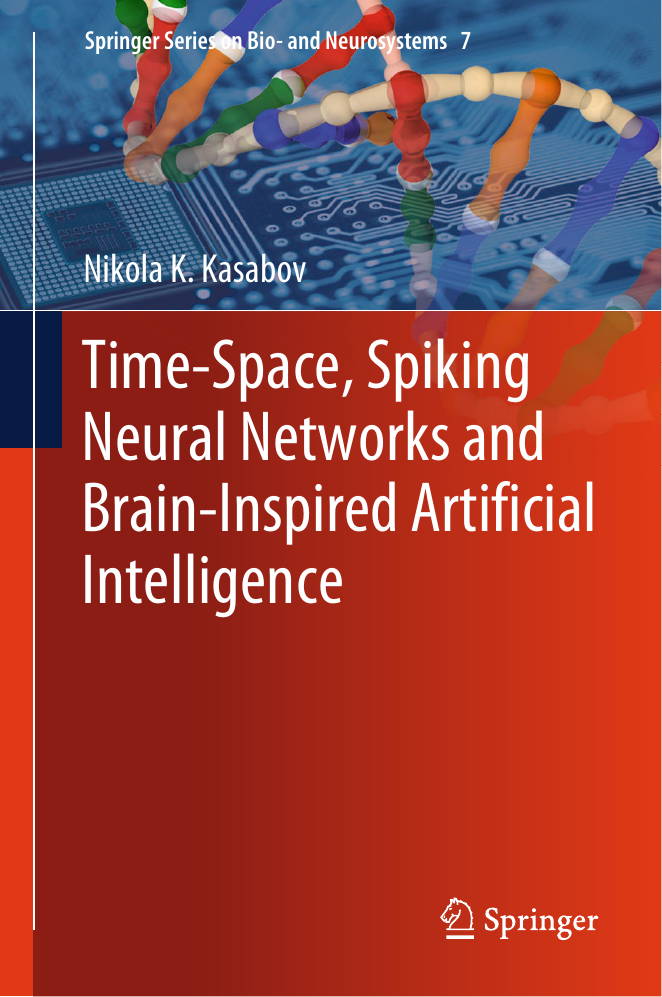


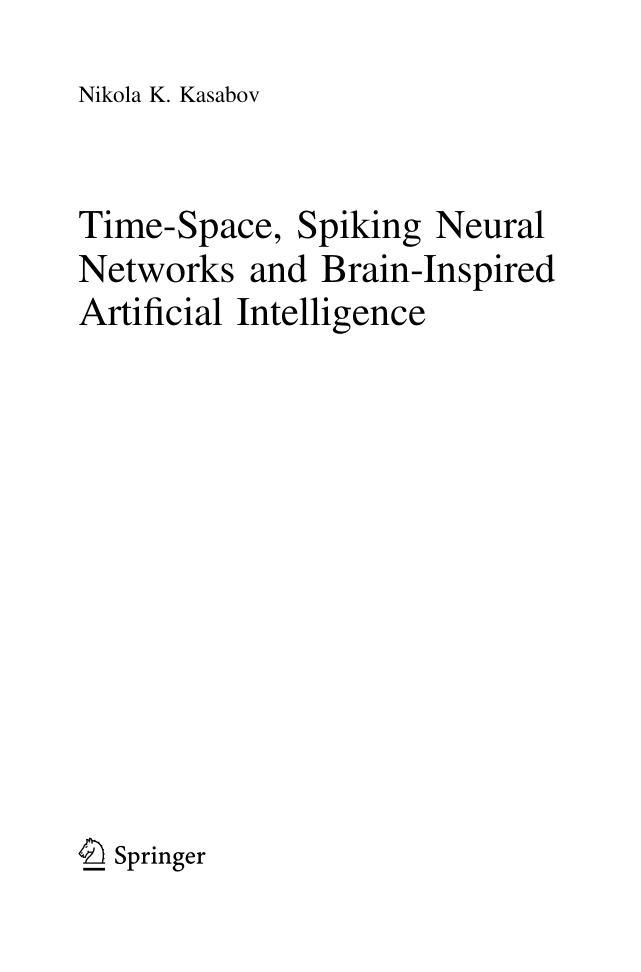
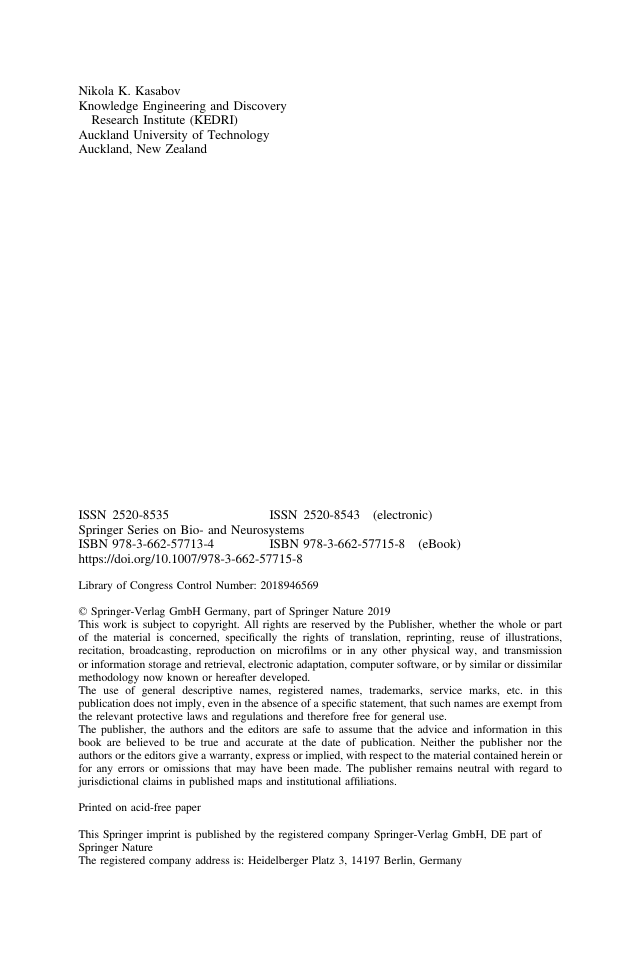
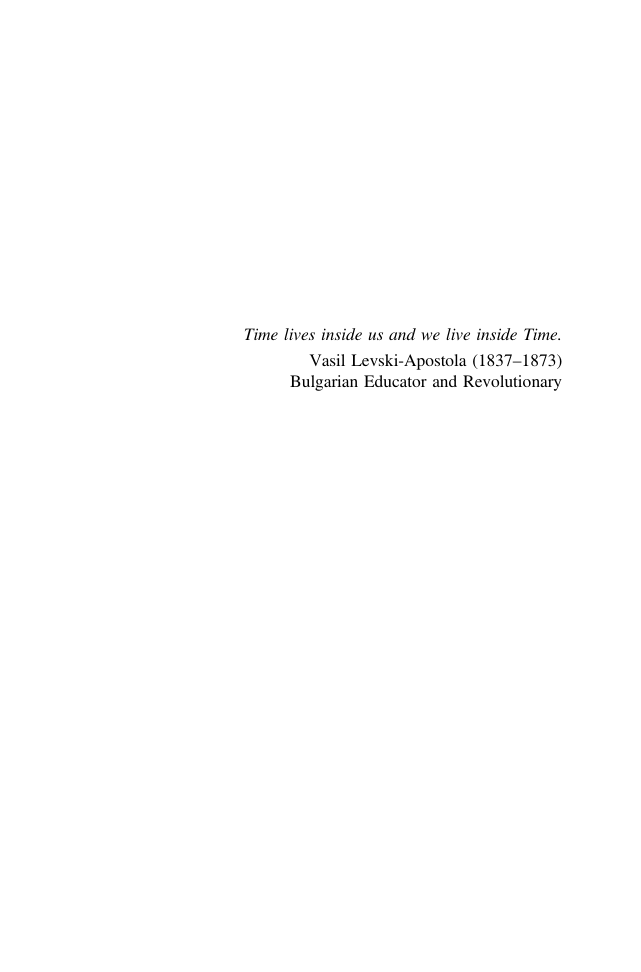

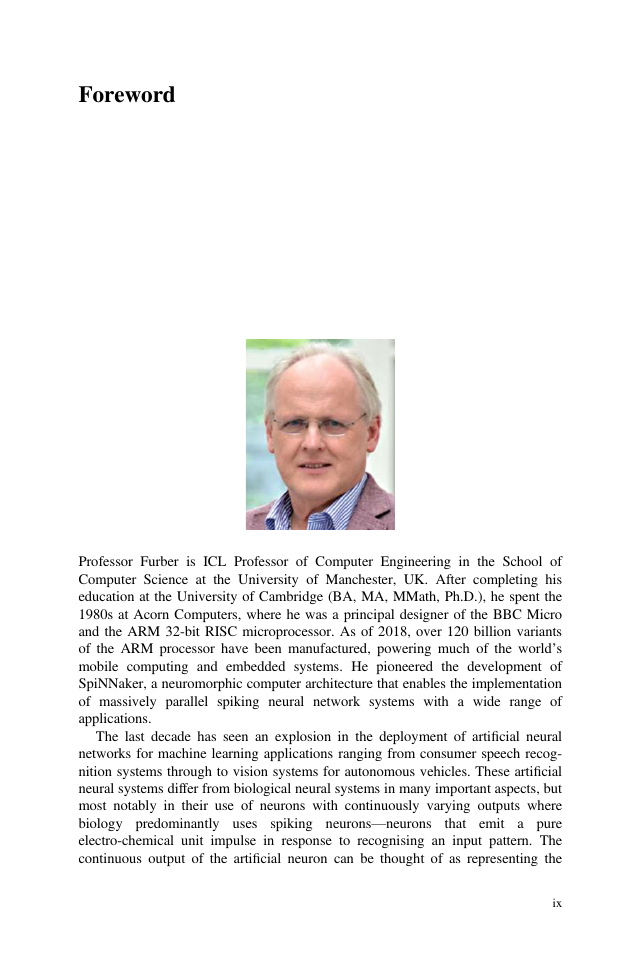








 2023年江西萍乡中考道德与法治真题及答案.doc
2023年江西萍乡中考道德与法治真题及答案.doc 2012年重庆南川中考生物真题及答案.doc
2012年重庆南川中考生物真题及答案.doc 2013年江西师范大学地理学综合及文艺理论基础考研真题.doc
2013年江西师范大学地理学综合及文艺理论基础考研真题.doc 2020年四川甘孜小升初语文真题及答案I卷.doc
2020年四川甘孜小升初语文真题及答案I卷.doc 2020年注册岩土工程师专业基础考试真题及答案.doc
2020年注册岩土工程师专业基础考试真题及答案.doc 2023-2024学年福建省厦门市九年级上学期数学月考试题及答案.doc
2023-2024学年福建省厦门市九年级上学期数学月考试题及答案.doc 2021-2022学年辽宁省沈阳市大东区九年级上学期语文期末试题及答案.doc
2021-2022学年辽宁省沈阳市大东区九年级上学期语文期末试题及答案.doc 2022-2023学年北京东城区初三第一学期物理期末试卷及答案.doc
2022-2023学年北京东城区初三第一学期物理期末试卷及答案.doc 2018上半年江西教师资格初中地理学科知识与教学能力真题及答案.doc
2018上半年江西教师资格初中地理学科知识与教学能力真题及答案.doc 2012年河北国家公务员申论考试真题及答案-省级.doc
2012年河北国家公务员申论考试真题及答案-省级.doc 2020-2021学年江苏省扬州市江都区邵樊片九年级上学期数学第一次质量检测试题及答案.doc
2020-2021学年江苏省扬州市江都区邵樊片九年级上学期数学第一次质量检测试题及答案.doc 2022下半年黑龙江教师资格证中学综合素质真题及答案.doc
2022下半年黑龙江教师资格证中学综合素质真题及答案.doc